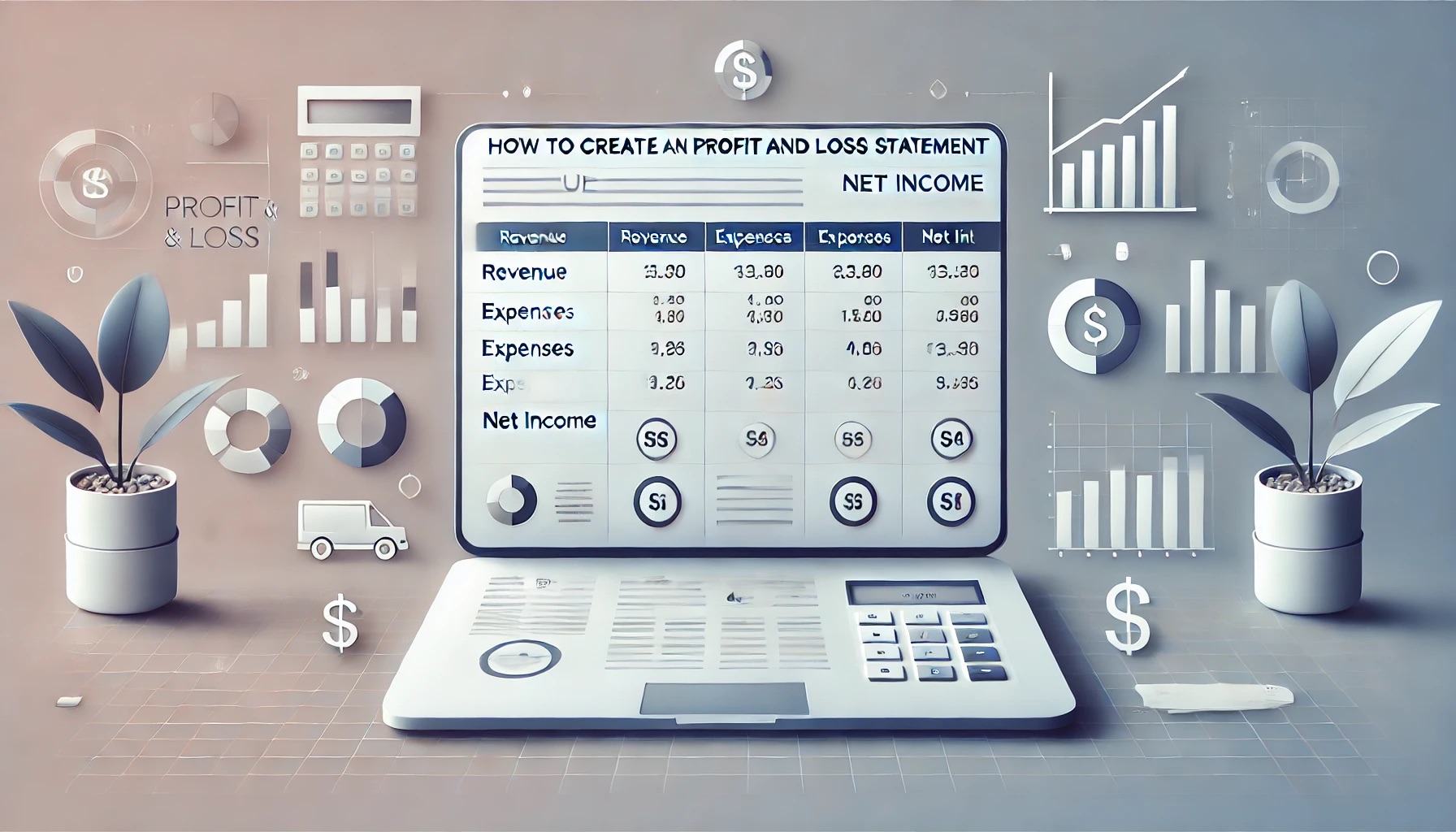Managing a business involves overseeing multiple moving parts, with financial health being one of the most critical components. For business owners, understanding and analyzing financial performance is essential to make informed decisions and maintain long-term success. One of the most valuable tools for this task is the Profit and Loss Statement (P&L Statement).
A well-crafted P&L statement summarizes a company’s financial activities over a specific period, offering key insights into revenue, expenses, and overall profitability. This document serves as a cornerstone for tracking financial health, making strategic decisions, and identifying growth opportunities.
In this guide, we will walk you through everything you need to know about creating a profit and loss statement, its importance, and how it compares to other financial documents. By following these steps and utilizing free templates, you can streamline the financial management of your business and make data-driven decisions with confidence.

What Is a Profit and Loss Statement Template?
A Profit and Loss Statement (P&L) is a financial document that captures the financial performance of a business over a specific period, such as a month, quarter, or year. It includes critical financial data such as:
- Gross profit
- Operating income
- Net revenue
- Expenses (operating and non-operating)
- Taxes
This document provides a detailed breakdown of income and expenditures, helping business owners evaluate profitability, manage expenses, and identify financial trends. Whether you run a small business or a large enterprise, a P&L statement is indispensable for maintaining financial transparency and accountability.
Why Is the Profit and Loss Statement So Important?
The P&L statement is a vital tool for various reasons:
1. Comprehensive Financial Overview
It consolidates critical financial data into a single document, offering a clear snapshot of the company’s performance.
2. Identifies Revenue Streams and Costs
The statement highlights which assets generate the most revenue and which incur the highest costs, enabling better resource allocation.
3. Assists in Decision-Making
By analyzing financial trends, business owners can make informed decisions to optimize profitability and reduce unnecessary expenses.
4. Supports Financial Planning
A well-maintained P&L statement helps in setting budgets, forecasting future performance, and preparing for growth.
5. Enhances Competitive Edge
By understanding the company’s financial position, you can identify areas for improvement and stay ahead of competitors.
P&L Statement vs. Cash Flow Statement
Although the P&L statement and cash flow statement are often confused, they serve distinct purposes:
Profit and Loss Statement
- Focuses on revenues, expenses, and net income.
- Highlights profitability over a specific period.
Cash Flow Statement
- Tracks the flow of cash in and out of the business.
- Provides an overview of liquidity and cash management.
While the P&L statement emphasizes profitability, the cash flow statement evaluates a company’s ability to meet financial obligations.
How to Create a Profit and Loss Statement Template
To create an effective P&L statement, follow these steps:
1. Revenue
Begin by listing all sources of revenue, including product sales, service fees, and other income streams. Organize the data by month, quarter, or year, depending on your reporting period. This section provides a foundation for evaluating overall performance.
2. Expenses
Document all business expenses, including:
- Rent and utilities
- Salaries and wages
- Office supplies
- Maintenance costs
Organizing expenses by category improves clarity and makes it easier to identify areas for cost reduction.
3. Cost of Goods Sold (COGS)
Include the cost of producing goods or delivering services. COGS typically covers:
- Raw materials
- Manufacturing labor
- Packaging
This section helps determine gross profit by subtracting COGS from total revenue.
4. Marketing and Advertising
Detail expenses related to marketing campaigns, social media ads, and promotional events. Tracking these costs helps assess the return on investment (ROI) for marketing efforts.
5. Research and Development (R&D)
If your business invests in innovation, include R&D expenses in the statement. This reflects the company’s commitment to growth and long-term success.
6. Taxes
Document all tax liabilities, including corporate taxes and other applicable fees. Accurate tax reporting ensures compliance and avoids financial penalties.
7. Net Income
Calculate net income by subtracting total expenses from total revenue. This figure represents the company’s profitability and serves as a key indicator of financial health.
Where to Create a Profit and Loss Statement Template
Several tools are available for creating a P&L statement. Among them, Microsoft Excel stands out as a versatile and user-friendly option. Excel allows you to:
- Customize templates to suit your business needs.
- Automate calculations with built-in formulas.
- Visualize data with charts and graphs.
If you don’t have access to Microsoft Office, consider purchasing an affordable license from platforms like RoyalCDKeys, which offers discounted Microsoft Office keys.
Ready-to-Use Templates
To save time, download these free P&L templates and customize them for your business:
Template 1: Comprehensive Profit and Loss Statement
A detailed template featuring all major categories, including revenue, expenses, and net income.
Template 2: Simple Profit and Loss Statement
Ideal for small businesses, this template focuses on essential elements for quick financial analysis.
Template 3: Customizable P&L Statement with Logo
A professional template with space for your company’s logo and branding.
Time to Start Building Your P&L Statement
Creating a profit and loss statement is a crucial step in understanding your business’s financial health. By tracking revenue, expenses, and net income, you gain valuable insights that support decision-making and strategic planning.
With the steps and templates provided in this guide, you can confidently create a P&L statement tailored to your business needs. Start today and take control of your financial future.
Source: Create Your Profit and Loss Statement [Free Templates Included]
Don’t forget to explore our previous post: Create a Budget Proposal and Calculate Costs Easily